Architectural 3D Image Rendering for a Restaurant Terrace: Making-of
This example of architectural rendering services was inspired by one unforgettable trip to Italy, pre-quarantine. Vera Duhina, a senior 3D artist at ArchiCGI, was impressed by the mixture of old elegant architecture with the bold new one she saw in Italian towns. A holder of a Master’s Degree in Architecture, she understood what a subtle job it was to preserve the uniqueness of the urban landscape and a country’s national heritage. She took lots of photos and decided to create one day a CGI project showing how seamlessly modern can be incorporated into traditional.
So when enrolling in the ArchiCGI annual contest, Vera knew exactly what she wanted to do. She sought a project with a challenge, charm, and character. The 3D artist picked the Commercial Exterior Rendering category and started work.
The Object and Environment
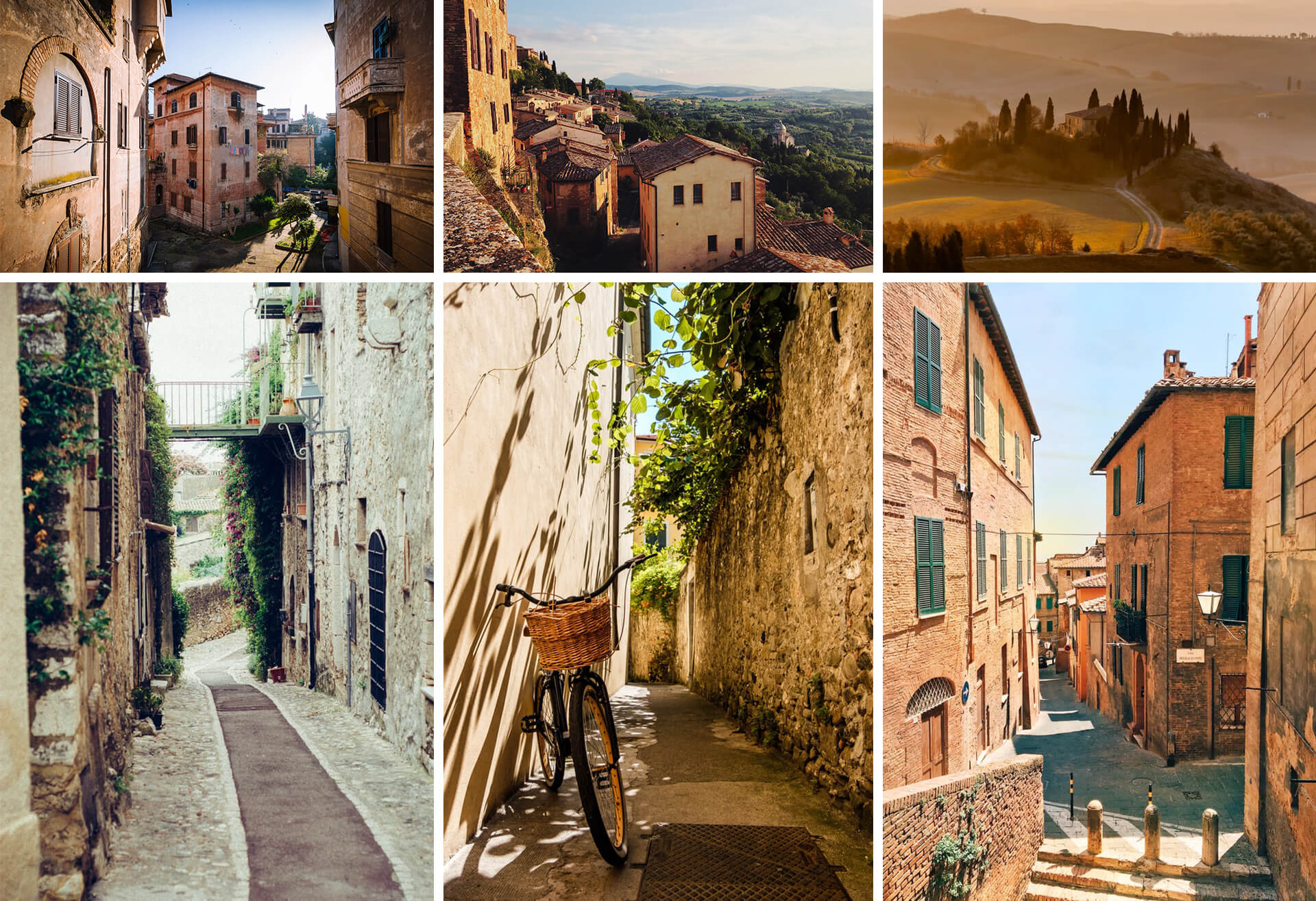
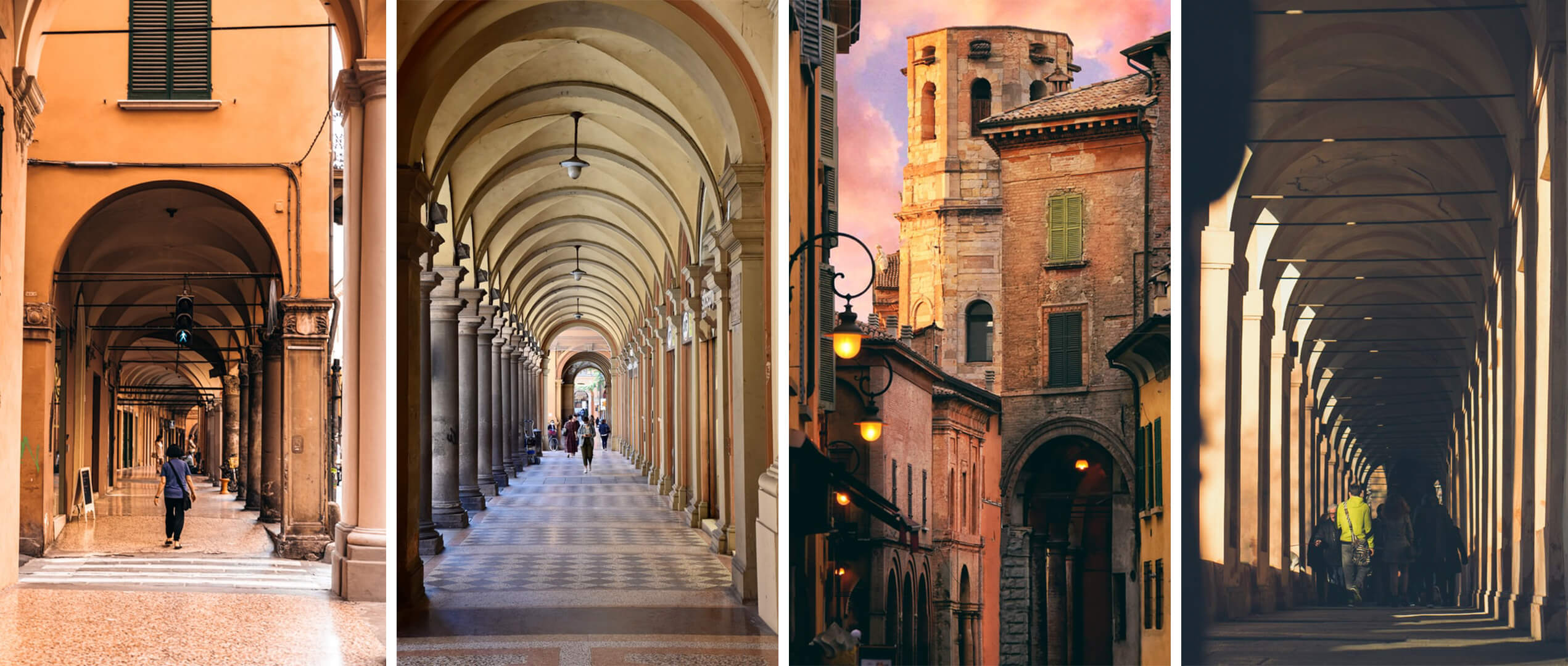
The architectural 3D image depicts a terrace of a waterside restaurant in an Italian town, on a hot summer evening. The place was to be modern, yet in harmony with the historical architecture around. The location was made up from scratch based on reference imagery you see above and photos the 3D artist took in Italy.
So according to Vera’s idea, the architect designed a façade that would match the style of the street around. They kept and strengthened the arcade, opted for stone instead of glass, and decided to restore the mosaic ceiling and tiled floor of the terrace. Inside, however, the restaurant could be designed in a modern style.
The Angle Choice
What an architect would want from such a CGI project is to show 2 things: how the building fits in the environment and that the exterior design would attract visitors to come in. This dictated the choice of the angle and composition.
Rather than showing the front of the building, Vera opted for a side view. It enabled her to demonstrate the arched terrace, give a glimpse of the restaurant interior, and show how well the design suited the surroundings. In addition, the architectural 3D image rendering shows that the terrace has a beautiful view of the sea.
Moreover, the 3D artist highlighted these features using the art of composition. For instance, she filled the terrace with warm lighting. This way, the sight is drawn to the terrace first. Then, it goes through it, right into the arched passageway. Mission accomplished — the rendering looks perfect, and the viewer checks out the whole architectural ensemble in about 5 seconds.
The Project Type
Such 3D architecture renders are commissioned for renovation and construction in historic environments. Architects use them for developing, checking out the impact of different design options, and choosing the best one. Furthermore, they may submit 3D images to clients and local building development committees for approval.
Creation of Architectural 3D Image Rendering
So, how does one create such a photorealistic gem? Let’s see how the 3D artist delivered the amazing CG picture and follow the project step-by-step.
Step 1: Composition
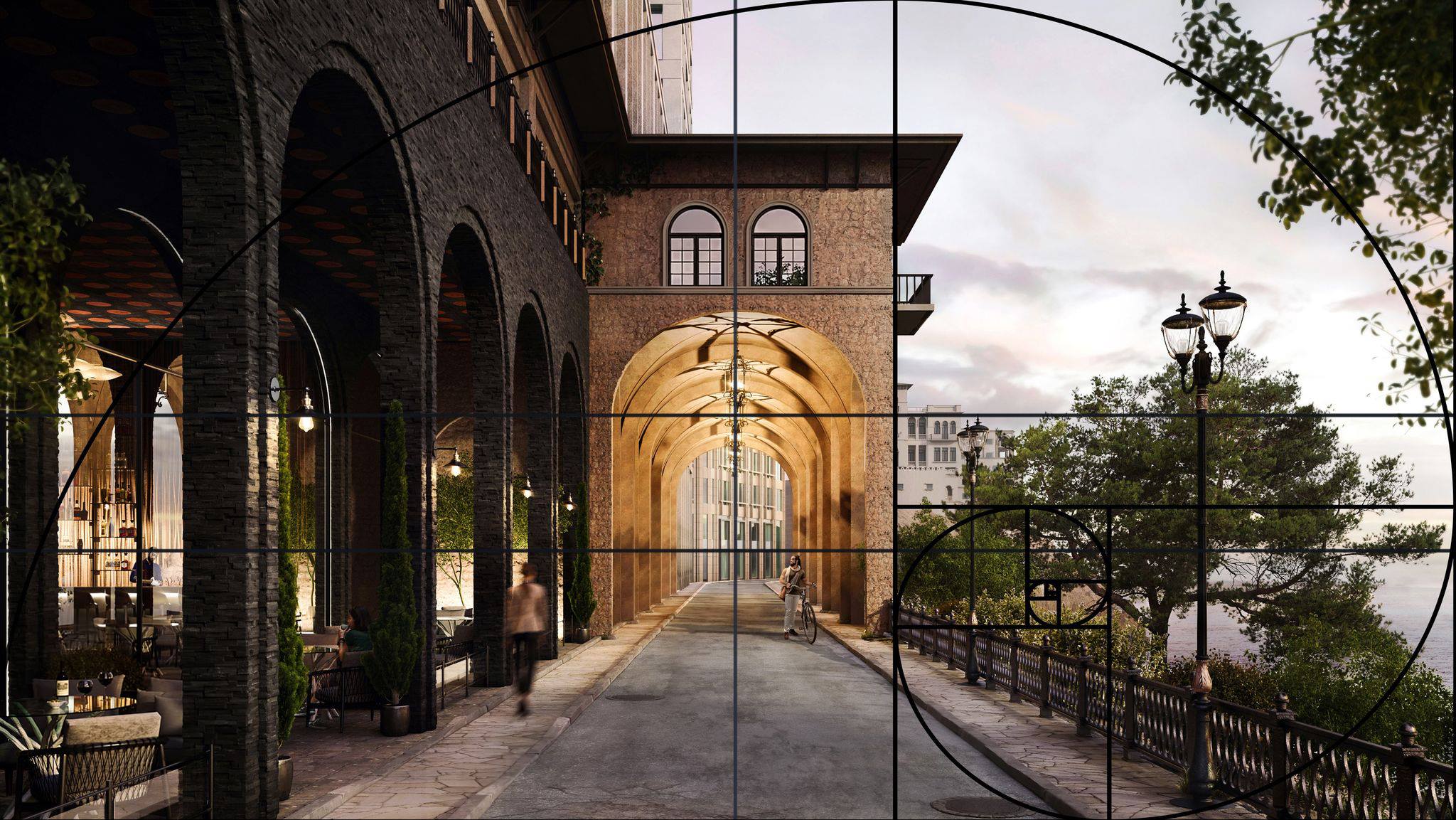
First, Vera decided to showcase a modern restaurant in an ancient Italian street. She then went on to develop the composition that would demonstrate the harmony of the building with its surroundings. The 3D artist sketched several options on paper and then opted for the golden ratio and Fibonacci spiral. To lead the viewer’s eye, she made all the lines go to the center and traced the way with warm evening lights.
Step 2: Clay 3D Modeling
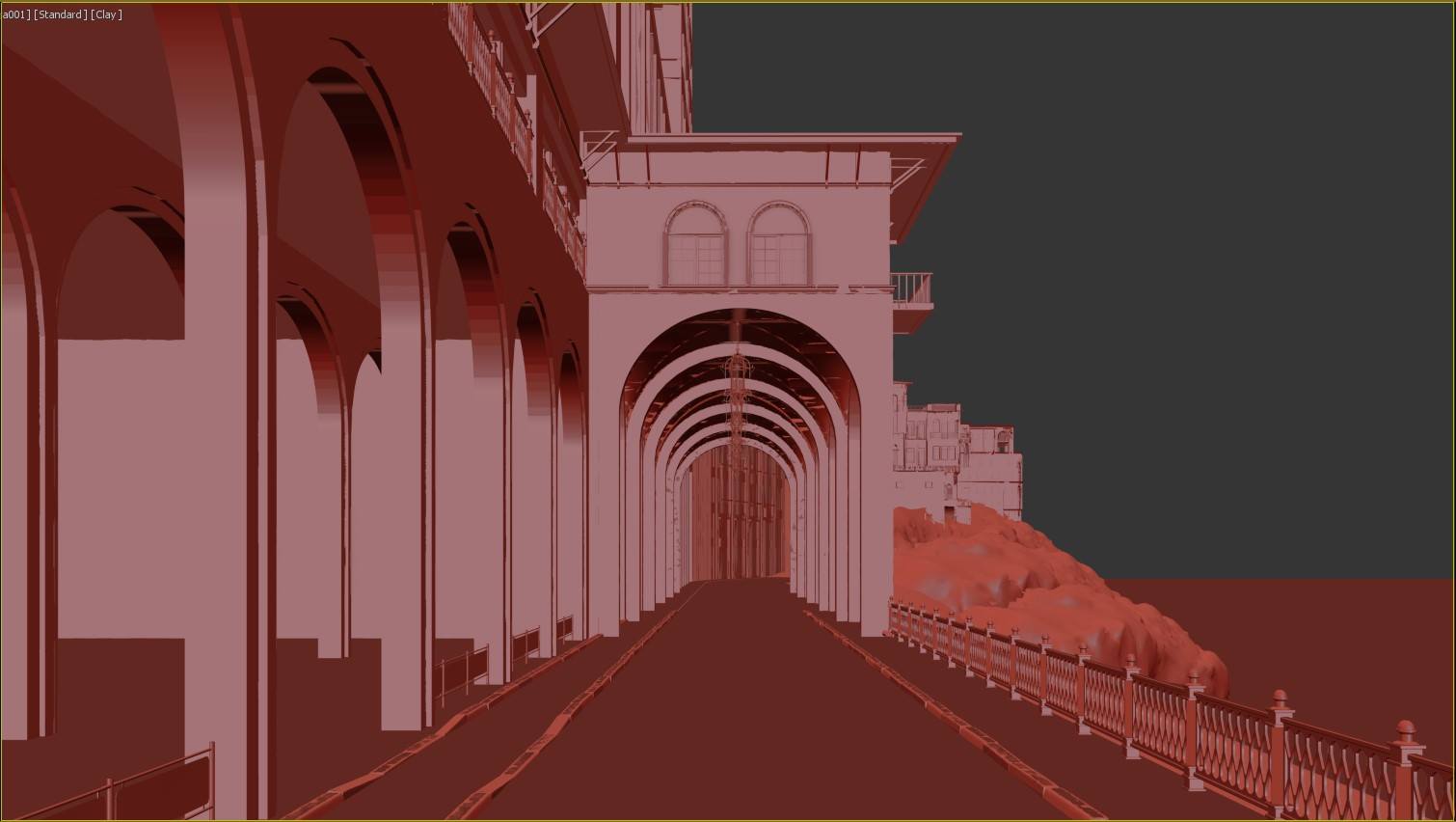
Now that the concept was clear, the 3D visualizer started to build the relief of the architectural rendering scene. She “furnished” it with boxes instead of buildings, and then made the ground slope.
Step 3: Adding Details
When the location of every element was determined, it was time to develop the geometry, to texture, and add materials. So first, Vera worked on the surrounding buildings, then the arched passageway, and finally — the restaurant.
To create an authentic-looking arcade, the 3D visualizer looked through lots and lots of photos. She examined the old passageways, vaults, fences, lanterns, and even at some cracked asphalt pics for good measure. The roads in real life seldom look picture perfect, so adding a few cracks here and there would make the architectural 3D image rendering more realistic. Moreover, Vera examined the reference photos of the materials that were used in the past, like the sett, bricks, and sandstone.
Step 4: Lighting
The restaurant rendering shows the scene just before dawn. So the light of the sunset dominates it, spiced up with the accent lights of the restaurant and the passageway. After that, it was time to press the “rendering” button and wait for the results.
Step 5: Post-production
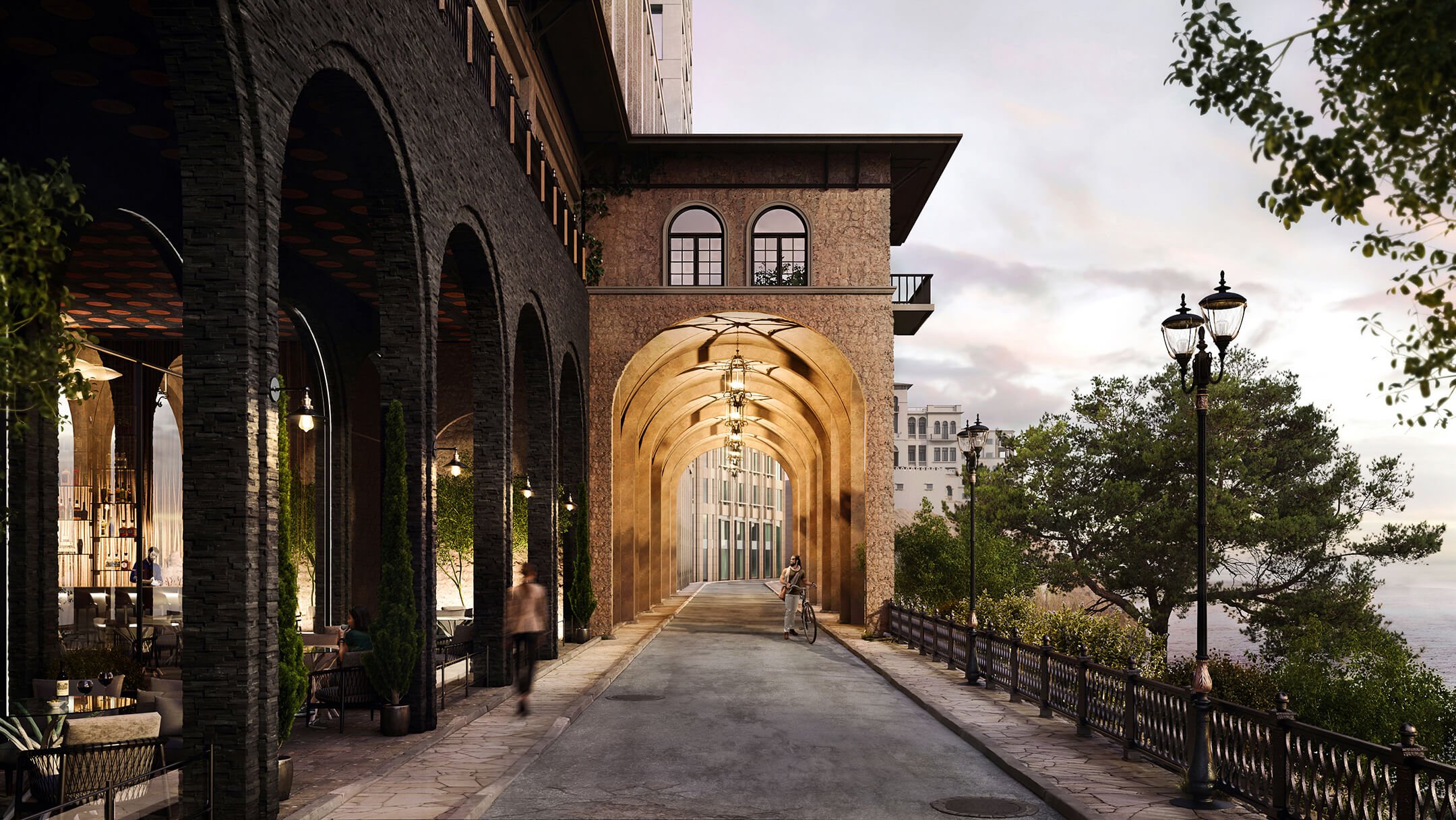
At this stage, the 3D image was ready but for a few details. As a finishing touch, Vera added a few people figures and tweaked the color balance a little.
It takes a lot of skill and experience to create a CGI masterpiece. The specialist needs to be a 3D rendering software ninja, an architectural design lover, and a real artist. Only that kind of person can spend hours searching for the best material references, examining the way the roads are built, how the light shines through the leaves, etc. All this work results in a perfectly photorealistic 3D image which helps our clients to achieve their goals — impress the jury, promote their brands online, explain their visions to clients.
Need high-end 3D visualization services? Then contact us, and we’ll deliver an architectural 3D image rendering (or a hundred of them) that reflects your design with accuracy and with the impact of a Hollywood movie.
Want to learn how much your project costs? See how we evaluate 3D rendering projects

Irma Prus
Content Writer, Copywriter
Irma writes articles and marketing copy for ArchiCGI. Her dream is that more people discover the power of CGI for architecture. Irma is into neuromarketing, ruby chocolate and Doctor Who series.



